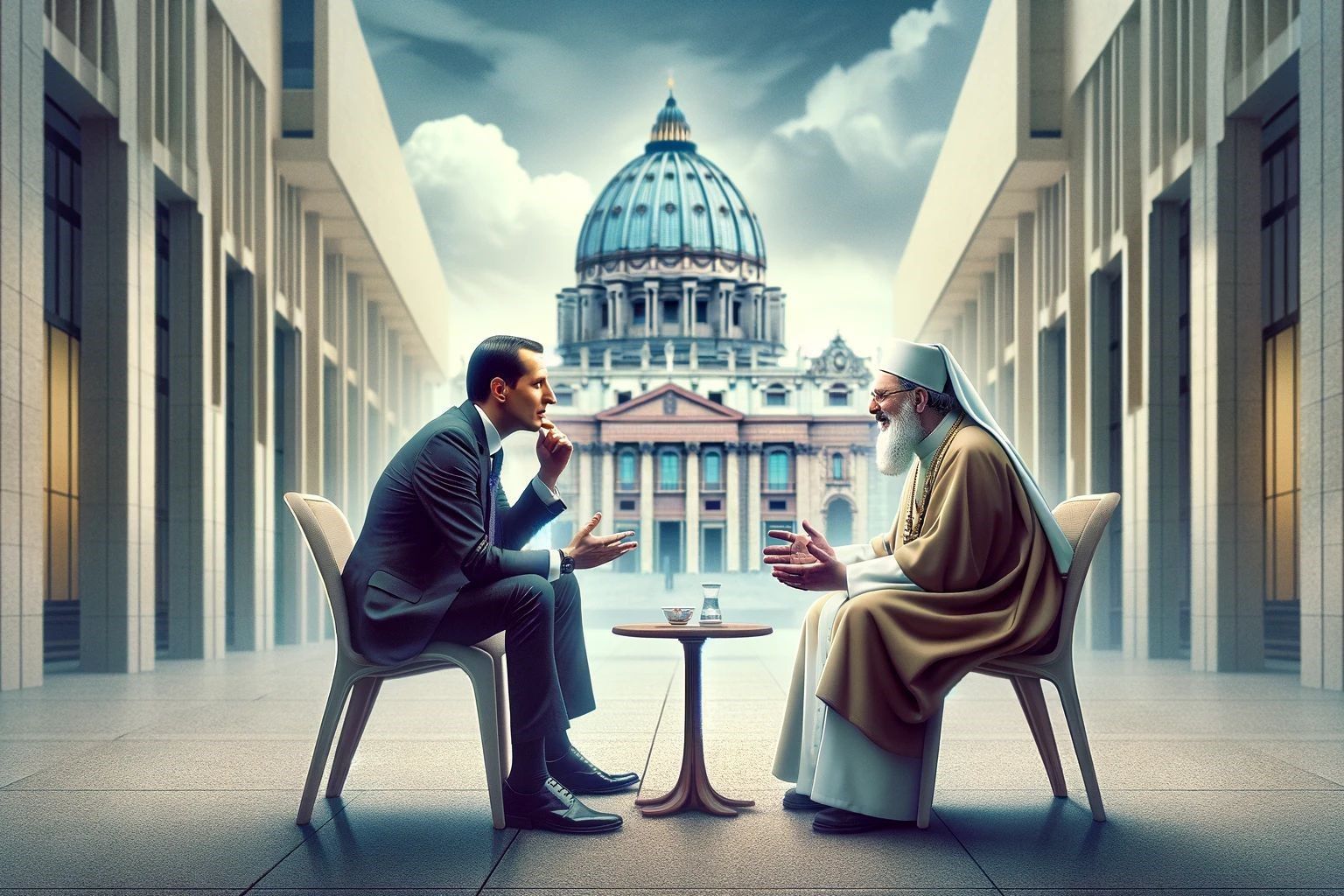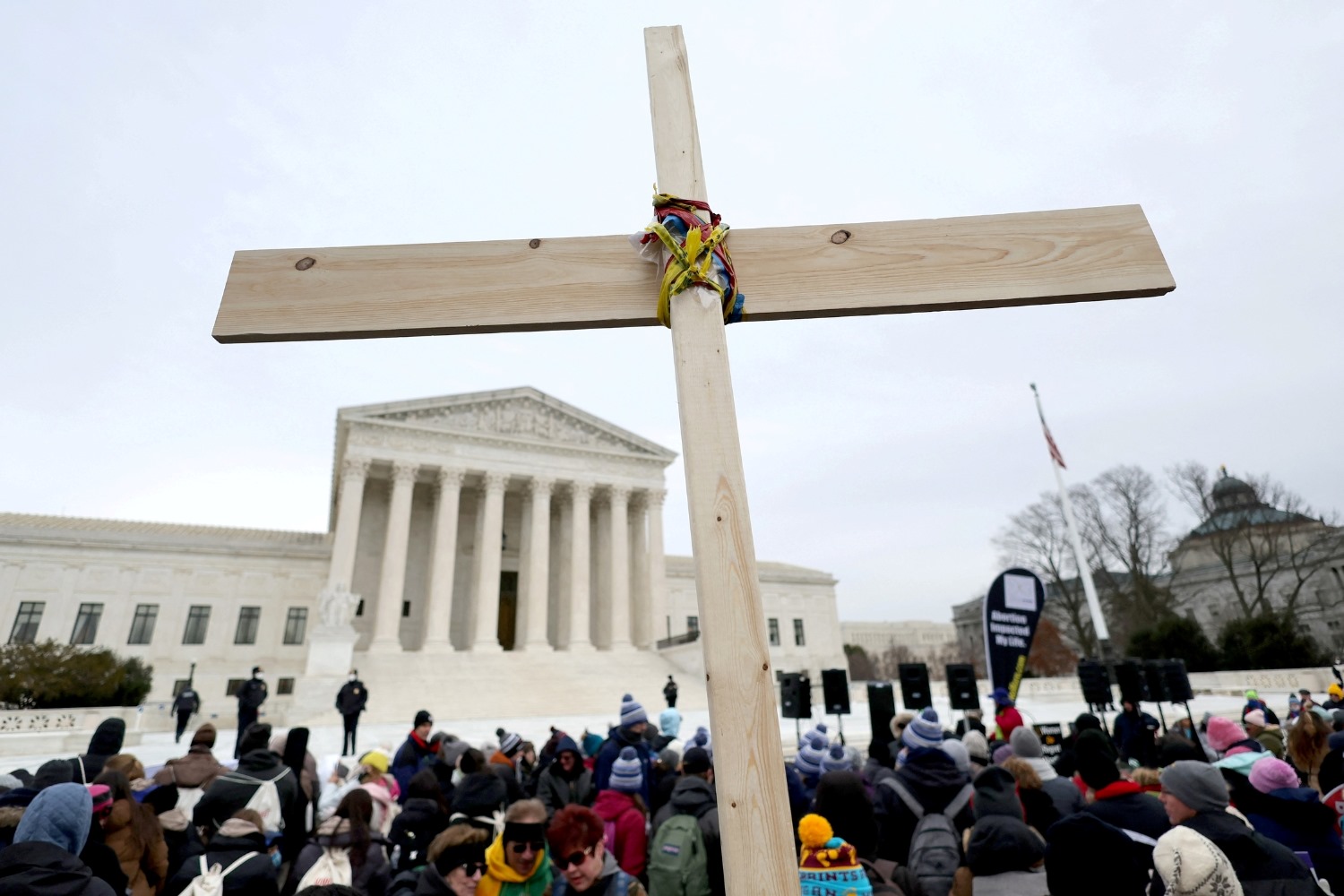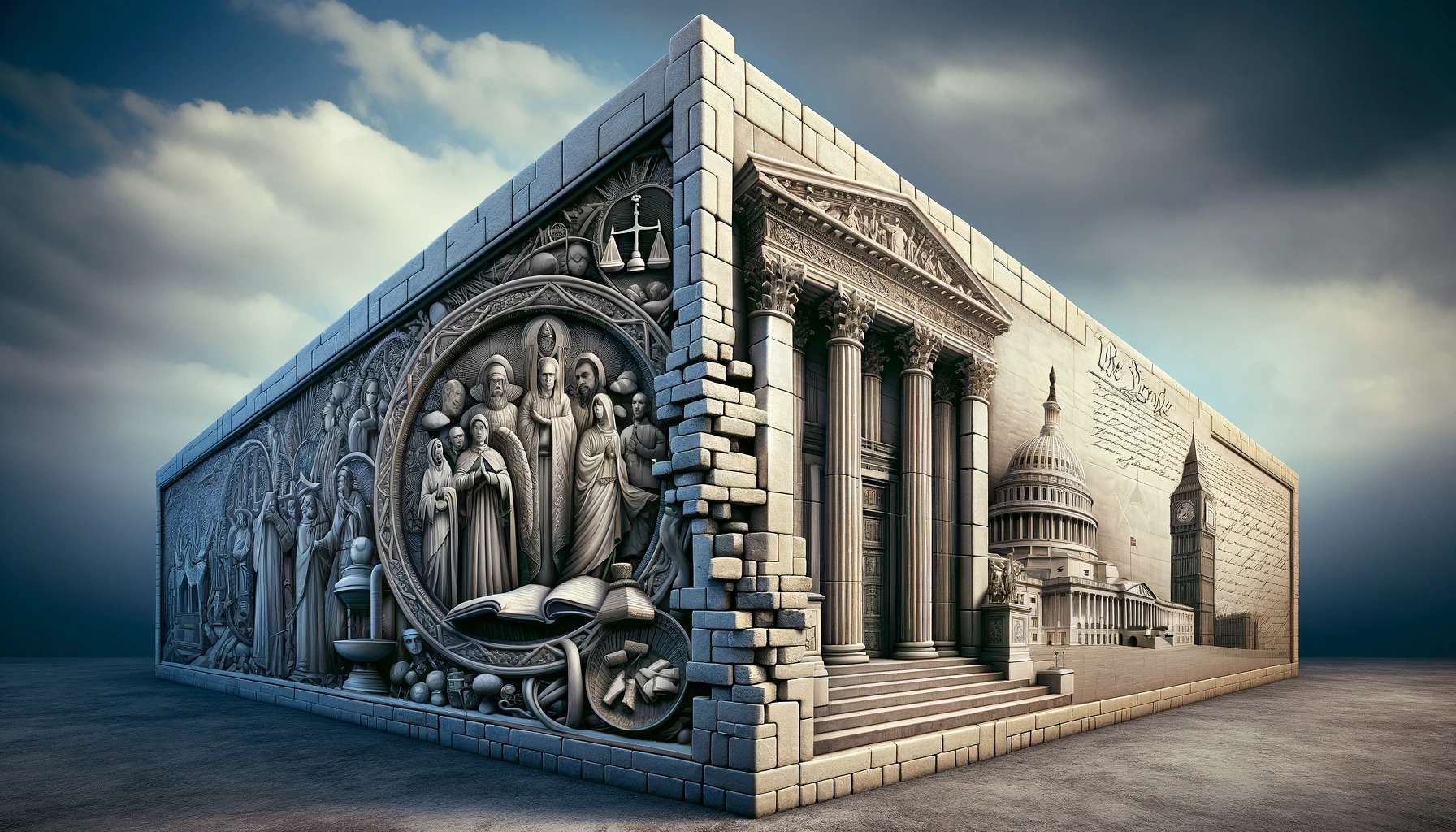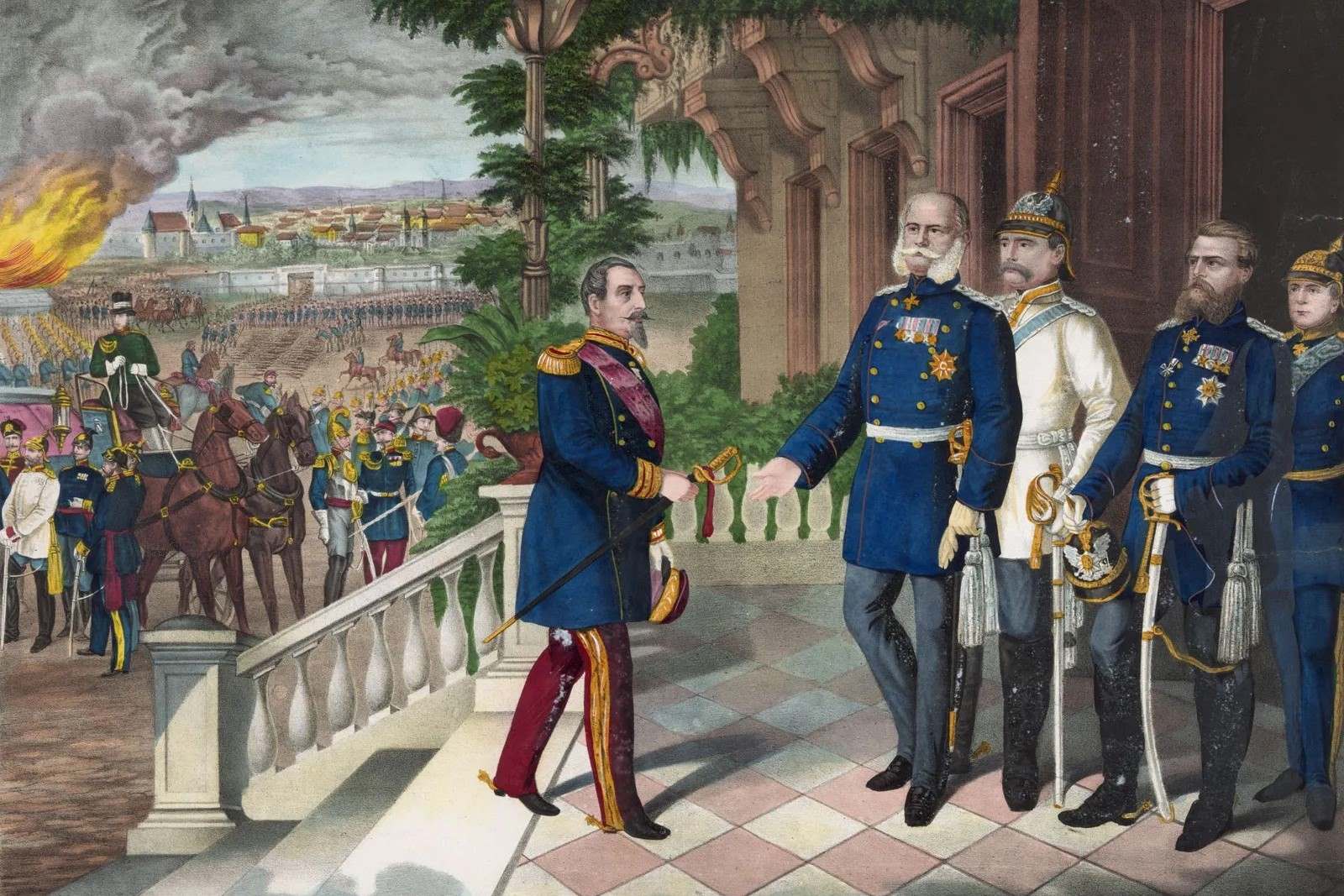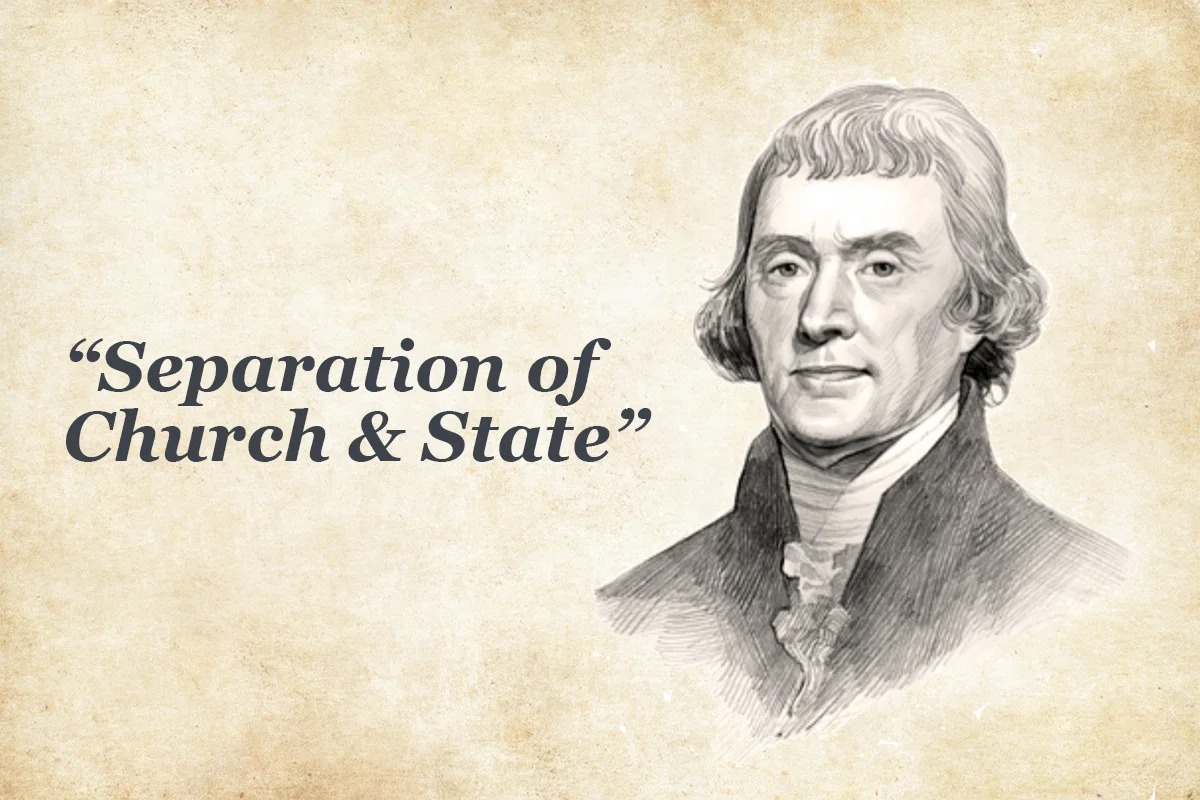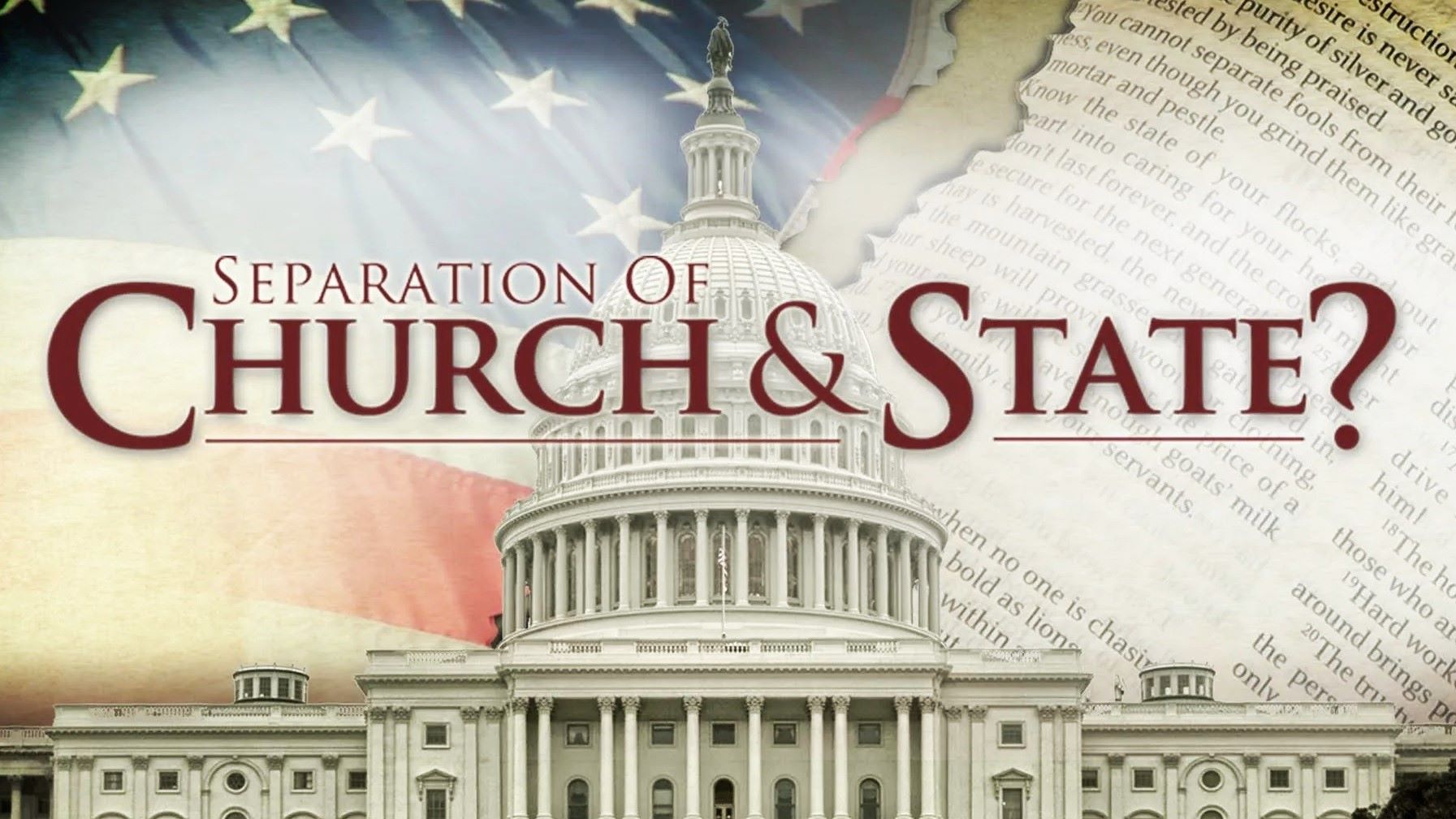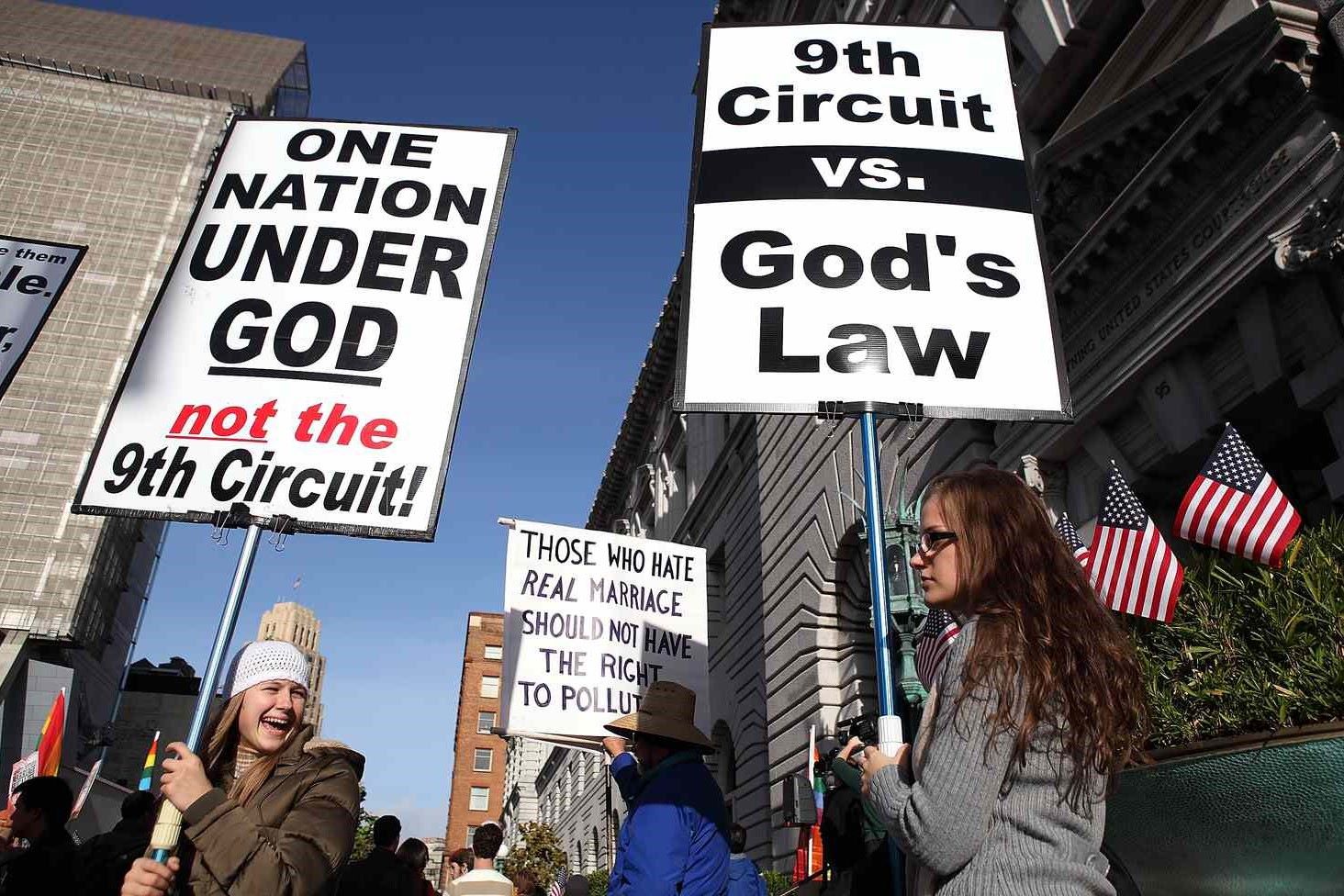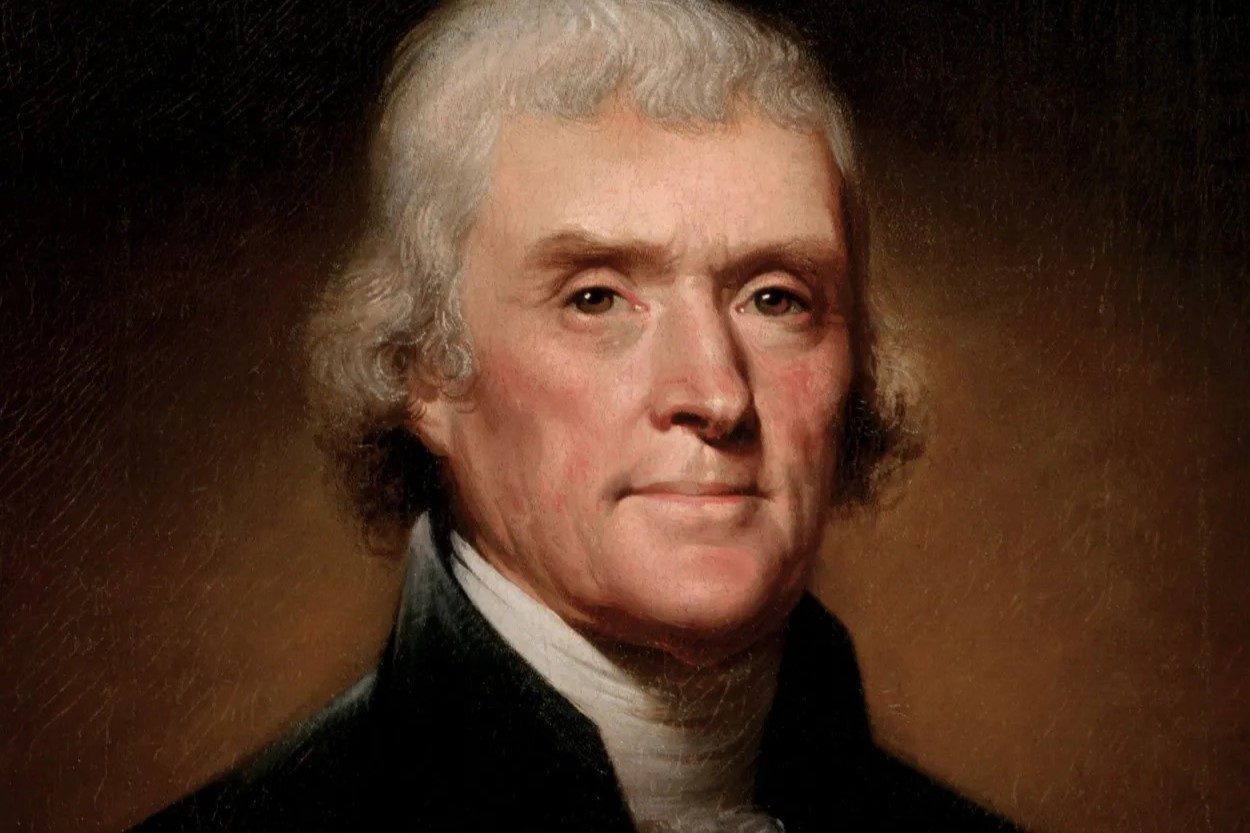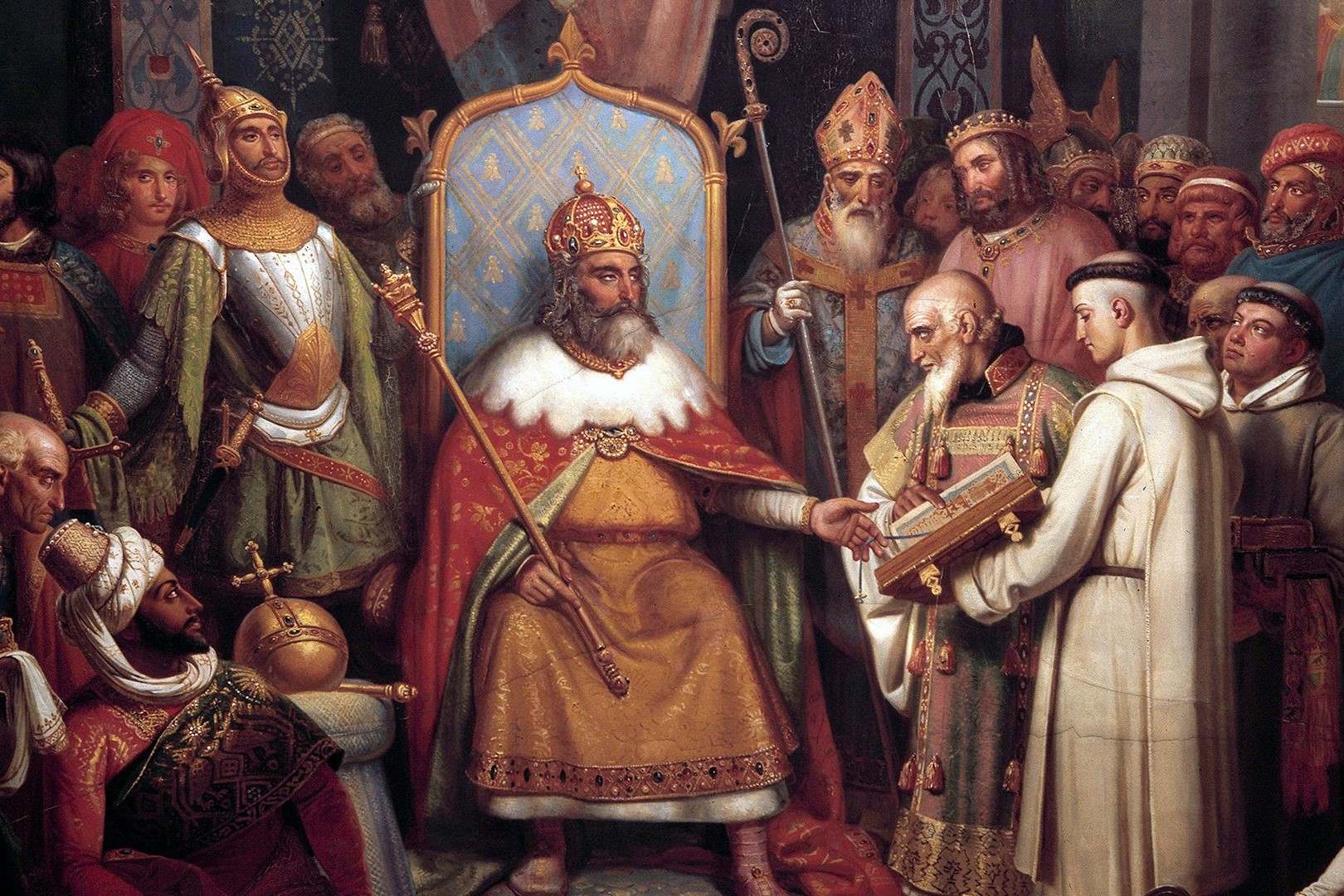Home>Theology and Spirituality>In A Battle Between Church And State What Did The French Government Ban In 2004
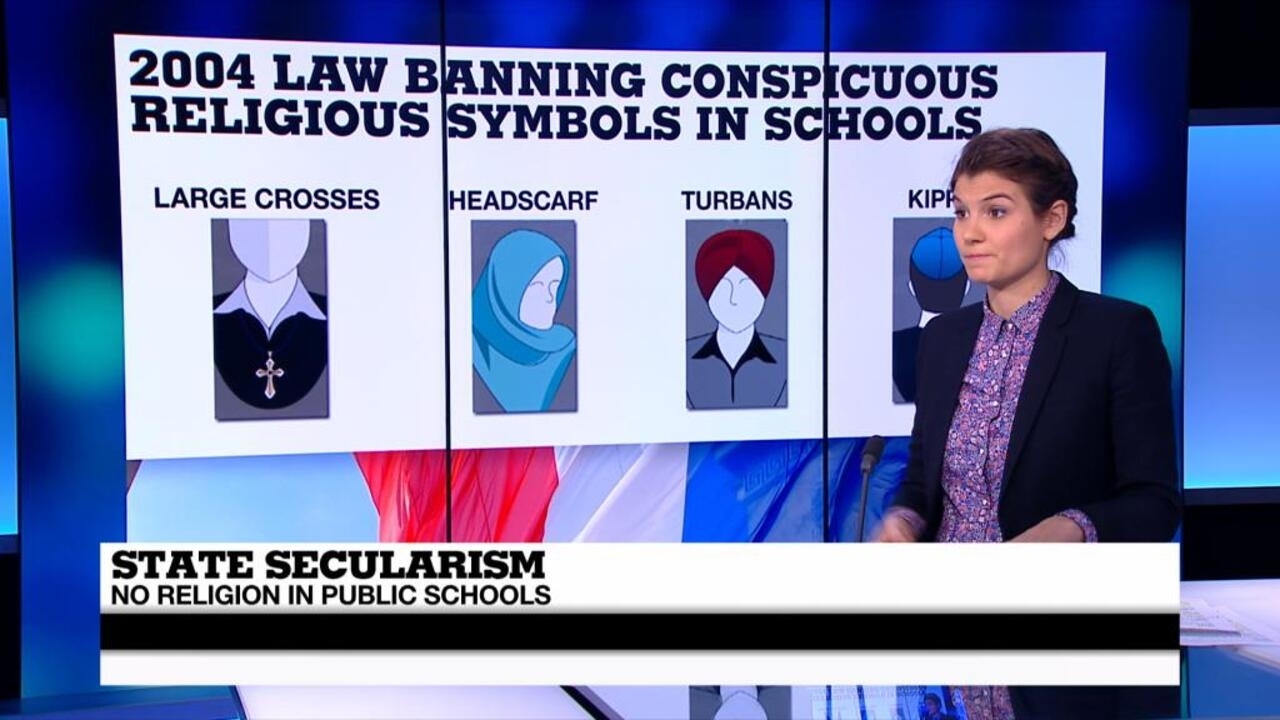

Theology and Spirituality
In A Battle Between Church And State What Did The French Government Ban In 2004
Published: February 11, 2024
Jason DeRose, Managing Editor at Christian.net, uses his expertise in religion and journalism to deepen understanding of faith's societal impacts. His editorial leadership, coupled with a strong academic background, enriches the platform’s diverse content, earning him recognition in both journalism and religious circles.
Discover the impact of the 2004 French government ban on theology and spirituality in the battle between church and state. Explore the implications and controversies surrounding this decision.
(Many of the links in this article redirect to a specific reviewed product. Your purchase of these products through affiliate links helps to generate commission for Christian.net, at no extra cost. Learn more)
Table of Contents
Introduction
In 2004, the French government made a significant decision that sparked widespread debate and controversy both within the country and internationally. This decision centered on the prohibition of conspicuous religious symbols in public schools, a move that brought the age-old debate of church versus state to the forefront of public discourse. The ban, which primarily targeted the wearing of headscarves by Muslim girls, as well as other religious symbols such as Sikh turbans and large Christian crosses, was a bold assertion of the French government's commitment to secularism.
This ban was not merely a legislative measure; it represented a clash of deeply held beliefs and values. On one side stood the principle of laïcité, the French concept of secularism that calls for the strict separation of religion from the public sphere. On the other side were the advocates of religious freedom and cultural expression, who viewed the ban as an infringement on individual liberties and an attack on diversity.
The decision to implement this ban was not made in isolation. It was influenced by a complex tapestry of historical, social, and political factors that have shaped the French national identity. France's long-standing commitment to secularism, rooted in the legacy of the French Revolution, has often been perceived as a cornerstone of the country's republican values. However, this commitment has also been a source of tension, particularly in a society that is increasingly diverse and multicultural.
The ban on religious symbols in public schools was a manifestation of the French government's attempt to navigate the delicate balance between upholding secular principles and respecting religious pluralism. It raised fundamental questions about the role of religion in the public sphere, the rights of individuals to express their religious beliefs, and the limits of state intervention in matters of faith and identity.
As we delve into the details of this pivotal moment in French history, it is crucial to examine the multifaceted implications of the ban on religious symbols, the challenges it posed to notions of freedom and equality, and the legal and societal responses that have continued to shape the ongoing discourse on secularism and religious diversity in France.
The French Government's Ban on Religious Symbols
In 2004, the French government implemented a ban on conspicuous religious symbols in public schools, igniting a contentious and far-reaching debate. The ban targeted visible manifestations of religious affiliation, including Muslim headscarves, Sikh turbans, and large Christian crosses. This bold move was a reflection of the French principle of laïcité, or secularism, which advocates for the strict separation of religion from the public sphere.
The ban on religious symbols was a direct response to the perceived challenges posed by religious diversity in the public education system. It aimed to uphold the principle of secularism and maintain a neutral environment in public institutions, particularly in the context of a multicultural and multi-faith society. The French government viewed the ban as a means of preserving the integrity of public education and preventing religious influence from encroaching on the secular space.
This decision was met with both support and opposition. Proponents of the ban argued that it was essential for preserving the secular nature of public institutions and ensuring that all students, regardless of their religious backgrounds, could learn and interact in an environment free from religious pressures. They contended that the ban was a necessary step to safeguard the principles of equality and neutrality in the education system.
Conversely, critics of the ban viewed it as an infringement on religious freedom and individual expression. They argued that the prohibition of religious symbols amounted to discrimination against certain religious communities and hindered the right of individuals to outwardly express their faith. The ban was perceived as a direct challenge to cultural and religious diversity, raising concerns about the marginalization of minority groups within the educational framework.
The ban on religious symbols in public schools was not merely a legislative measure; it encapsulated the complexities of navigating religious pluralism within a secular framework. It underscored the tensions between the state's commitment to secularism and the rights of individuals to freely practice and display their religious beliefs. This pivotal decision set the stage for a broader conversation about the boundaries of state intervention in matters of faith and identity, as well as the implications for religious freedom and cultural diversity in a modern, multicultural society.
The ban on religious symbols in public schools marked a defining moment in the ongoing discourse on secularism and religious diversity in France. It prompted a reevaluation of the relationship between the state and religious expression, sparking a nuanced and impassioned dialogue about the intersection of faith, identity, and public institutions. The implications of this ban continue to reverberate through French society, shaping the ongoing conversation about the delicate balance between secular principles and religious pluralism.
Impact on Religious Freedom
The ban on conspicuous religious symbols in French public schools had a profound impact on religious freedom, triggering a complex and contentious discourse about the rights of individuals to express their religious beliefs in a secular society. At its core, the ban raised fundamental questions about the boundaries of religious expression and the extent to which the state could regulate and restrict visible manifestations of faith.
One of the most significant implications of the ban was its perceived encroachment on the freedom of individuals to outwardly display their religious affiliations. For many, the wearing of religious symbols represented a deeply personal and integral aspect of their identity and faith. The prohibition of these symbols in public schools was viewed as a direct infringement on the rights of students to freely practice and express their religious beliefs. It sparked concerns about the potential marginalization of religious minorities and the suppression of cultural and religious diversity within the educational environment.
Furthermore, the ban raised broader concerns about the impact on religious pluralism and the ability of individuals from diverse religious backgrounds to fully participate in public institutions. By prohibiting visible religious symbols, the ban was seen as creating a barrier to the full and equal engagement of students from various religious communities. It prompted discussions about the inclusivity of public spaces and the extent to which secular principles could accommodate and respect the religious identities of individuals within a multicultural society.
Moreover, the ban's impact extended beyond the realm of education, resonating with broader debates about religious freedom and the rights of individuals in the public sphere. It prompted reflections on the role of the state in regulating religious expression and the potential implications for religious communities in the wider societal context. The ban underscored the complexities of balancing the principles of secularism with the protection of religious freedoms, highlighting the tensions between state neutrality and individual liberties.
In essence, the ban on religious symbols in public schools had a far-reaching impact on the landscape of religious freedom in France. It prompted a critical examination of the rights of individuals to express their religious beliefs in public institutions and the challenges of reconciling religious diversity with the principles of secularism. The ban ignited a robust and ongoing dialogue about the boundaries of religious expression, the rights of individuals to cultural and religious autonomy, and the evolving dynamics of religious freedom within a modern, pluralistic society.
Controversy and Criticism
The ban on conspicuous religious symbols in French public schools ignited a firestorm of controversy and drew sharp criticism from various quarters, both within France and on the global stage. The decision to prohibit visible manifestations of religious affiliation in educational institutions was met with fervent opposition, sparking a multifaceted debate that underscored the complexities of navigating religious diversity within a secular framework.
One of the primary sources of controversy stemmed from the perceived infringement on religious freedom and individual expression. Critics of the ban argued that it constituted a direct assault on the rights of individuals to outwardly display their religious beliefs. The prohibition of religious symbols was viewed as a violation of fundamental liberties, raising concerns about the potential marginalization of religious minorities and the suppression of cultural and religious diversity within the educational environment. This aspect of the ban sparked impassioned discourse about the rights of individuals to freely practice and express their faith, highlighting the deeply personal and integral nature of religious symbols for many individuals.
Furthermore, the ban faced criticism for its potential to exacerbate social divisions and perpetuate discrimination. Opponents argued that the prohibition of religious symbols could alienate and stigmatize students from diverse religious backgrounds, creating a sense of exclusion within the educational setting. The ban was seen as a potential barrier to the full and equal participation of students from various religious communities, raising concerns about the impact on social cohesion and the inclusivity of public institutions. This aspect of the controversy underscored the broader societal implications of the ban, prompting reflections on the potential consequences for social harmony and the treatment of religious minorities within the public sphere.
Additionally, the ban drew international criticism, with many viewing it as a departure from the principles of religious freedom and cultural diversity. The global response to the ban reflected concerns about the broader implications for religious pluralism and the rights of individuals to express their religious identities. It sparked discussions about the compatibility of the ban with international standards of religious freedom and human rights, highlighting the interconnectedness of the debate with broader global conversations about religious liberties and cultural autonomy.
In essence, the ban on religious symbols in French public schools generated significant controversy and drew widespread criticism for its perceived impact on religious freedom, social cohesion, and cultural diversity. The multifaceted nature of the opposition underscored the depth of the debate, reflecting the complex and nuanced considerations surrounding the intersection of secularism, religious expression, and individual liberties within a diverse and multicultural society.
Legal Challenges and Rulings
The ban on conspicuous religious symbols in French public schools prompted a series of legal challenges that underscored the complexities of reconciling secular principles with religious freedoms within the legal framework. These legal battles unfolded against the backdrop of deeply entrenched societal debates about the boundaries of religious expression and the rights of individuals to manifest their religious beliefs in the public sphere.
One of the pivotal legal challenges centered on the interpretation of the ban within the context of fundamental rights and freedoms guaranteed by the French constitution and international human rights instruments. Advocates and opponents of the ban engaged in legal proceedings that scrutinized the compatibility of the prohibition with principles of religious freedom, equality, and non-discrimination. These legal challenges raised fundamental questions about the extent to which the state could regulate visible manifestations of faith and the potential impact on the rights of individuals from diverse religious backgrounds.
The legal rulings stemming from these challenges reflected the intricate balance between secularism and religious freedoms within the French legal system. Courts grappled with the complexities of interpreting the ban in light of constitutional provisions and international legal standards, weighing the state's interest in upholding secular principles against the protection of individual liberties. The rulings underscored the nuanced and evolving nature of the legal discourse surrounding the ban, shedding light on the intricate considerations that shaped judicial interpretations of the prohibition.
Furthermore, the legal challenges and rulings brought to the fore the complexities of navigating religious diversity within the educational context. Courts deliberated on the implications of the ban for the rights of students to freely express their religious beliefs and the potential impact on the inclusivity of public institutions. These legal proceedings highlighted the multifaceted dimensions of the ban, prompting in-depth examinations of its implications for religious pluralism, cultural autonomy, and the rights of individuals within the educational framework.
In essence, the legal challenges and rulings stemming from the ban on religious symbols in French public schools underscored the intricate interplay between secularism and religious freedoms within the legal landscape. These legal battles reflected the complexities of interpreting and applying the ban within the framework of fundamental rights and constitutional provisions, shaping the ongoing legal discourse on the intersection of secular principles, religious expression, and individual liberties within a diverse and multicultural society.
Conclusion
The ban on conspicuous religious symbols in French public schools stands as a pivotal moment in the ongoing discourse on secularism, religious freedom, and cultural diversity. This far-reaching decision, implemented by the French government in 2004, ignited a multifaceted and impassioned debate that reverberated through the legal, societal, and international spheres. As the dust settled on the initial fervor surrounding the ban, it became evident that the implications of this prohibition extended far beyond the confines of public education, permeating the broader societal fabric and prompting critical reflections on the delicate balance between secular principles and religious pluralism.
The ban on religious symbols in public schools encapsulated the complexities of navigating religious diversity within a secular framework. It underscored the tensions between the state's commitment to secularism and the rights of individuals to freely practice and display their religious beliefs. The ban prompted a critical examination of the boundaries of religious expression, the rights of individuals to cultural and religious autonomy, and the evolving dynamics of religious freedom within a modern, pluralistic society.
Moreover, the ban sparked controversy and drew sharp criticism for its perceived impact on religious freedom, social cohesion, and cultural diversity. The multifaceted nature of the opposition underscored the depth of the debate, reflecting the complex and nuanced considerations surrounding the intersection of secularism, religious expression, and individual liberties within a diverse and multicultural society.
The legal challenges and rulings stemming from the ban underscored the intricate interplay between secularism and religious freedoms within the legal landscape. These legal battles reflected the complexities of interpreting and applying the ban within the framework of fundamental rights and constitutional provisions, shaping the ongoing legal discourse on the intersection of secular principles, religious expression, and individual liberties within a diverse and multicultural society.
In essence, the ban on religious symbols in French public schools prompted a reevaluation of the relationship between the state and religious expression, sparking a nuanced and ongoing dialogue about the boundaries of religious expression, the rights of individuals to cultural and religious autonomy, and the evolving dynamics of religious freedom within a modern, pluralistic society. As the discourse continues to unfold, the ban serves as a poignant reminder of the intricate and evolving nature of the intersection between secularism, religious diversity, and individual liberties in contemporary society.
